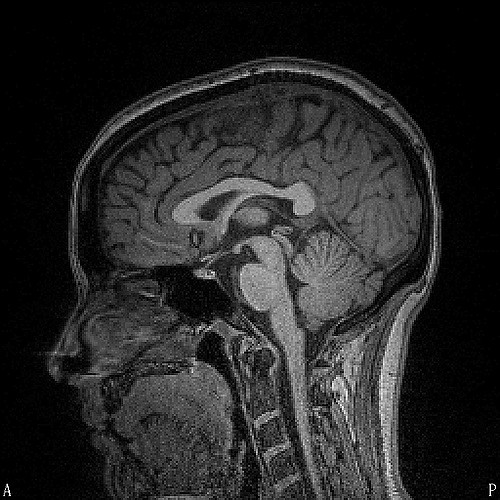I’m taking the rest of the year to be with family and friends, so this is where I bid everyone a lovely holiday season, whatever you celebrate, and a happy new year. Here’s hoping 2017 is good to us all. See you back here January 2nd!


I’m taking the rest of the year to be with family and friends, so this is where I bid everyone a lovely holiday season, whatever you celebrate, and a happy new year. Here’s hoping 2017 is good to us all. See you back here January 2nd!


{Once again, let me preface this by saying I am not the definitive authority on this topic. I am one woman with an opinion who provides care to adult and adolescent domestic violence and sexual assault patients. At the end of the day, you need to decide the best course of action to take for your practice and patient population. Hopefully, this spurs some discussion, where needed, as that is its intent.}
So I was asked by an FHO reader if I would comment on the best way to document the narrative portion of the history. That is, the history of the patient’s chief complaint. Always up for stepping into the abyss, I said, sure–why not? After all, it comes up in pretty much every single testimony workshop I teach.
Perhaps the best way to begin this discussion is by saying, I don’t necessarily believe there is one right way to document the narrative history of the assault. Some of you out there write down everything the patient says, verbatim. I think that’s weird, but I don’t necessarily think it’s wrong.
Why do I think it’s weird? Because I personally can’t listen to a patient and also transcribe everything the patient says. When I do that, I miss all the rich, non-verbal communication that happens, and that impacts patient care. But that’s just me. Also, most people aren’t terribly accurate at capturing every single word the patient says, which I imagine defeats the purpose of choosing that method in the first place. So for me, it feels like a missed opportunity to connect with a patient as a person (and not a crime scene or a complainant), and begin the process of assessing their well-being.
My preference is to summarize, except where my summary couldn’t possibly do justice to the patient’s account of events or state of mind (threats, fear, etc.). Then I add quotes. This gets me where I need to be to take care of this patient in the most comprehensive way possible. And since the purpose of obtaining the narrative history of the assault is to guide my exam process, focus any sample collection the patient may desire, and inform the patient-specific discharge and follow-up plan, I don’t feel like I could more effectively accomplish any of that if I wrote down what the patient said verbatim.
I do think there are some wrong ways to approach narrative documentation, though (and I see them all in my travels):
So if I was going to summarize, I’d say this: if you have a clinical rationale for documenting in your particular style, you’re probably just fine (assuming your work is also being peer-reviewed). If your approach to documentation of the narrative history is dictated by any non-clinician professionals (e.g. law enforcement or prosecutors like you to document in a certain way), or you see its purpose as being primarily for the investigation and prosecution of the reported crime, I think that’s problematic. And if your approach simply doesn’t resemble healthcare at all, well, it may be time to reassess.

Oh hey–it’s the week before Christmas (how did that happen?!). I will be working this week, but hopefully next week is vacation time, so that’s where my brain is right now (#freelancerproblems). I had a relatively lazy weekend, what with the ice storm that hit DC on Saturday. So much surfing of the web occurred. Here’s what caught my eye since last we spoke:
Merriam-Webster’s word of 2016 is pretty spot on
Speaking of the word of 2016, I cannot believe I might need have to actually worry about this
(Related)
Leadership hacks worth considering
Why not say what you mean?
The problem with Exceptional Women
So-called identity politics are more than some made-up liberal construct
Fake news, deconstructed
The powerful new cover story from NatGeo
I love Jessica Luther’s work on sexual violence
There’s a whole group of docs who are going to hate this study
I was just introduced to this quote and I am 100% certain nothing has ever been more true

OVCTTAC has a revamped website with a dedicated section to SANE-SART resources. It includes the SANE Program Development and Operation Guide, among other resources. It is a multimedia site, so there are videos, as well as archived webinars on a variety of topics. Worth perusing for sure.

The Battered Women’s Justice Project has an upcoming webinar, Nonconsensual Pornography: Circulating Sexual Violence Online. The session will be held January 24th from 2-3:30pm CT. From the website:
Pornography, much like sexual violence, is pervasive, especially in online spaces and has evolved to include content that is both consensually produced and disseminated as well as that which is not. Accordingly, in this webinar, presenter Amber Morczek will define nonconsensual pornography (often referred to as ‘revenge porn’), how it impacts victims, what is being done to address it, and how it relates to rape culture.
Register for the webinar here. Note: space is limited.

99.9% of the communication I have with FHO readers is overwhelmingly lovely, but every now and again I get something a little less pleasant. Like a comment that perhaps I should stick to talking about forensic nursing, and leave the politics out of it. So I want to be clear: I am a progressive. I believe healthcare is a human right. I believe economic equality cannot occur if women don’t control their own bodies. I believe that political correctness is actually another term for respect for all, and isn’t something that should be sneered at. I am a proud Army wife and support our troops. I believe in the 2nd Amendment, but I don’t believe it allows for unregulated gun sales and ownership, and I certainly don’t believe you can wave the 2nd Amendment in my face and not also remember there is an equally important 1st Amendment. And I believe in intersectionality–that poverty, racism, sexism, ableism, homophobia and transphobia all impact the health of our patients along with the violence they’ve experienced, and if we truly want to care for our patients, we can’t just care for the one without addressing all the others.
That being said, this is my site, and it is unaffiliated with any agency or organization. I speak solely for myself and as long as that’s true, this site will include “politics”. Because politics impact our patients’ lives, and particularly in these times, I believe it is imperative that we remain vigilant in working towards the health and safety of all people. FHO is not a vanity project; it exists in service to the profession I love. But having an opinion, taking a stand, this is what allows us to move the work forward. Apathy and a refusal to commit to an ideal–these are the enemies of progress.
So now that we’ve gotten that out of the way, here’s what’s caught my eye since last we spoke:
Heroin deaths have officially exceeded gun deaths in the US
The so-called women’s magazines are killing it right now in the political commentary arena
Despair and hope (Related)
That pesky hippocampus
Pickle juice! (so good)
The future of reproductive health?
If you haven’t read When Breath Becomes Air, do.
System failures seem to always be part of the story

I received a question from a reader about choosing a training for prospective members of her SANE team. She had heard that there were some trainings out there that didn’t meet eligibility requirements for SANE certification and wanted to avoid them, but wasn’t sure what to look for. I agree that not only is it important to identify training that meets certification eligibility criteria, it’s also important to have some sense about quality in general (I promise you–not all SANE trainings are equal). So I encourage everyone to refer back to this guest post from 2009, which is as relevant today as it was more than 7 years ago (make sure to read the comments, too). Considering the sheer number of new subscribers we’ve had just in the past 2 months, it’s probably worth posting again, regardless. Enjoy!
{Post edited to update links.}

EVAWI just put out a bulletin on the neurobiology of trauma (PDF) that, while geared toward investigators, can serve as a good primer on the issue for clinicians, as well. From the email announcement:
…[T]his 38-page document provides basic information about the brain and explores the impact of trauma on behavior and memory. It then highlights the implications for law enforcement interviews conducted with victims of sexual assault and other traumatic crimes.
The training bulletin was written by Dr. Chris Wilson, Dr. Kim Lonsway, and Sgt. Joanne Archambault (Ret.), with contributions by Dr. Jim Hopper. It was reviewed by experts from a variety of professional disciplines, including psychology, law enforcement, and prosecution. We hope you find it to be a useful resource, to enhance your understanding of these critical issues.
With an understanding of how the brain responds to trauma, and an appreciation for how trauma affects memory encoding, storage and recall, we now have the potential to become truly “trauma informed” in our interviewing practices.
I think the reference section is particularly useful for clinicians, especially those testifying as an expert on this issue. However, to be clear, I am very skeptical of most forensic nurses testifying as experts on this topic unless they know the science backward and forward–that means being able to speak to the literature that challenges some of these ideas, as well as the literature that supports it. (I feel like I’m pretty well-versed in this issue; I do not provide expert testimony on it.) Reading a monograph like this, or attending a training, does not make one an expert. It’s useful information to help understand patient behavior and the workings of the brain in the face of trauma, but proceed cautiously with how you use it in court.

In looking for something completely unrelated, I stumbled upon this infographic from Elsevier on how to read a scientific paper. I certainly spend enough time talking about how important this skill is to develop when I discuss defensible practice and testimony. I like this resource because it acknowledges up front that this is unlike other reading we do in our lives. It’s particularly good guidance to follow for the articles upon which you plan on relying in court (or the ones you will highlight to justify changes to clinical practice):

This week is pretty hectic (due dates, holiday mandatory fun, etc.) and we spent part of the weekend working in anticipation of it all, but there was still time to surf the interwebs (hello, procrastination). Honestly, I find my twitter feed overwhelmingly depressing, but somehow I still can’t look away. Here’s what’s caught my eye since last we spoke:
I’ll never watch Sailor Moon with my nieces in the same way again
Some of the best (concise) presentation advice
It’s going to be years of essays like this
And also ones like this (I love her writing, btw)
Still some homicide rates that haven’t decreased
I wish…I have talked to many patients in my career who have made decisions based on inaccurate/nonsensical information; the Internet makes it so much easier to spread.
Medscape’s annual physician ethics survey (interesting)
We will forgive so much for football
Good on Merriam-Webster (I love their Twitter feed)
Still way too many stories like this one
And finally, many of you have asked about the new pup–I suppose it was inevitable, he has his own Instagram account (100% Sasha’s doing). Also, he’s great 🙂
{BTW, you’ll also find me on Insta; it’s mostly travel, dogs and food, but isn’t everyone’s? You can also get there by clicking on the Instagram button at the bottom right corner of every page (Follow FHO on Social Media)}

I was asked an interesting question on the site recently. A reader wanted to know if delivering lab results was appropriate for RNs. There seemed to be some disagreement within the reader’s program about whether the results from any labs drawn during a medical-forensic exam could be delivered to the patient by the forensic nurse who obtained them. The answer is yes–I’m racking my brain trying to think of an instance where it wouldn’t be kosher, assuming there’s no hospital/agency policy that states otherwise. Not only is it appropriate for nurses to do so (and we do it all the time in other types of practice), but recent federal rules dictate that patients can bypass healthcare providers altogether for lab results and obtain them directly from the lab running the tests. In fact, patients can go into electronic portals and look them up on their own in many practices (both my primary care doc and my neurologist allow me to). I am unaware of any state that prohibits RNs from giving patients test results. However, you should refer back to your state Nurse Practice Act to assess your scope of practice, and engage your hospital/agency’s risk management professionals if need be.
That said, my hunch is here the issue is that someone has attached the word forensic to the results. And this is where I need to encourage everyone to slow their roll. Because we sometimes lose sight of the fundamental nursing aspects of our job when that word comes into play. Labs/tests/imaging happening in your own institution are being done for the treatment of that patient. While they may at some point be used in a legal setting, there’s no way for the clinician to know that at the time. Sure, these tests are forensic in nature—everything during the encounter that happens after the patient says they’ve been assaulted is forensic in nature. And everything is medical, because they’ve come in for care, and potentially sample collection for an evidence collection kit (if that’s something available and of interest to them). The two cannot be separated out, and trying to do so is a waste of time. When I get involved in a case going to trial, I will review the forensic nurse’s paperwork—and then I’ll ask for all of the other records generated at the point that patient presented. Triage notes, ED doc’s medical screening exam, any labs drawn prior to the forensic nurse getting involved—all of it. Because it’s all forensic at the point we’re going to trial, just like it was all medical when the patient came in asking for care.
We treat these patients, and our role in working with these patients, differently much of the time because we are so caught up in the legal implications of the work. I would encourage people to stop getting so wrapped around the axel on this, because two points are critical to remember:
1.) A small percentage of our patients will ever see the inside of a courtroom, but 100% of them have the potential to develop healthcare sequelae from the violence they’ve experienced (research is clear on this, from child abuse to elder abuse; trafficking, sexual violence, domestic violence—you name it)*. If you’re only focused on the “forensic” part of the job, you are doing a disservice to the majority of your patients. Take the potential legal implications of the patient encounter seriously, and perform the sample collection meticulously so that patients have all of the criminal justice options available to them if that’s the route they choose. But do not put patients in a position where they are receiving a lesser standard of healthcare than if they just wandered into any ED in the US because the focus is on the kit or the photography. Patients need and deserve the CDC-recommended standards for STI prophylaxis; access to emergency contraceptives; appropriate screening for nPEP; anticipatory guidance upon discharge tailored to their particular issues; and follow-up that’s more comprehensive than “see your primary care provider if you have any problems”. And not for nothing, but these things should be completed by the forensic nurse—the specialist in the agency who understands the interplay between the particular trauma this patient has experienced and the impact it may have on their health. I don’t have hard evidence to back this statement up, but anecdotally based on all the records I review, clinicians who take care of all of these things as a part of the medical-forensic encounter (rather than relying on the ED staff to handle it), simply have more healthcare-focused, complete exams.
2.) There is emerging research that suggests that patients have a better experience at the point of exam and better outcomes, medically and legally, when we are more focused on patient as patient than patient as crime scene (see basically everything R. Campbell and colleagues have authored for support). Focusing on the health and well-being of patients, providing them with choices, treating the whole patient rather than honing in on the body parts of greatest interest in a potential court proceeding, benefits the whole process.
Which brings us back to the original question—can/should RNs be providing our patients lab/test results. Don’t overthink this—be the very best clinician you can be; practice fully within the scope of your licensure and according to your (regularly updated) policies and procedures; attend to the whole patient and document accordingly. And ask yourself—would I provide patient care differently with other populations? If the answer is yes, perhaps it’s time to examine your approach.
*There isn’t a single statement I repeat more often than this one. Not by a long shot.
**Canada, Australia and others: does this differ for you guys? I obviously don’t know the answer to that.
***As always, this site is not intended to provide legal advice. We’re discussing the larger practice implications here. I am not the authority on your scope of practice, so again, refer back to your state nurse practice act and agency risk management for legal advice on this topic.